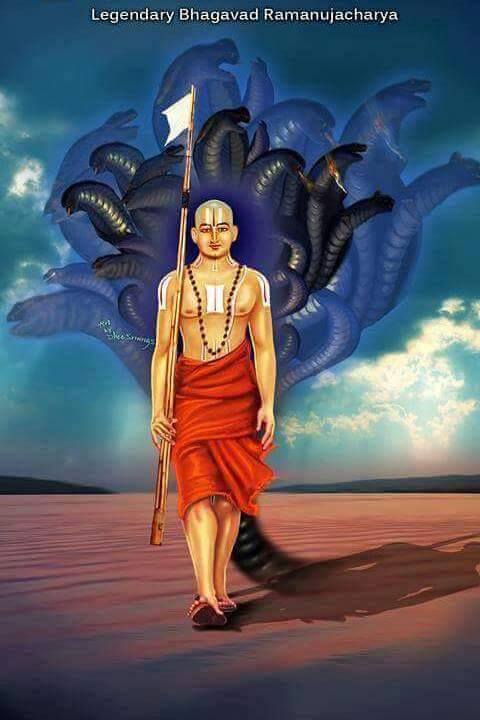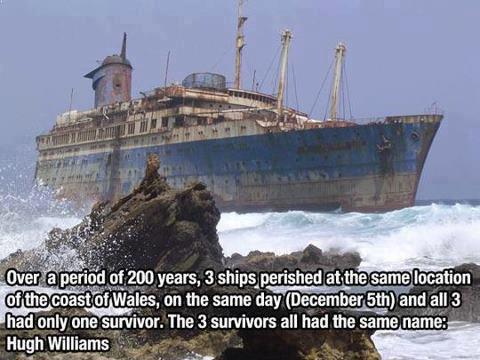One hundred and sixty-eight years have passed since our forefathers came from India. They came with Ramayana, Hanuman Chalisa, Satnarine Poti, Tulsiplants and mango trees. After arrival, they found new land, new atmosphere and new work. They were hard workers so they gave their labour, time and energy to make a new country.
In the guidance of the British, our ancestors came here in the name of gold, gospel and God but their hearts and minds were rooted in the fertile soil of the Indian culture, tradition, spirituality and social setup so they protected the ancestral property of Mother India. The Indian community has great history from Calcutta to Caroni, from Motherland India to fatherland T&T, from Indian language to foreign languages. Our ancestors were not only a part of past history but they were making a new history on this land with own skills, capacity and ability.
During 168 years of history, the entire globe totally changed its way of living and process of thinking with the slogan of globalisation, economical liberation, human rights and democratic values. At the end of Imperialism, Colonialism and Communism, history has seen two World Wars and the dangerous games of the atomic bomb at Hiroshima in Japan.
During this long history, the Indian community tried to preserve eternal values in a changing society with the vision of our ancestors from the Manu Smriti to St Tulsidas’ Ramayana. Our people are currently living in this present time following the 5,000 years history of Hindu civilization and knowledge to preserve, propagate and organise in the light of our ancestral vision at this shore.
The present Indian community is aware of the wealth of our ancestors and ready to adapt to new changes and transformation in the need of this modern period. When we look at pages of history of the Indian community from May 30 1845 to May 30 2013, we are looking on the horizon of great changes. In the first ship Fatel Razack, 225 labourers came in the period of British Colony. From that day until now, of the 1.4 million population of Trinidad & Tobago, 42 per cent are Indians.
Political progress
In political progress until now, we have seen the emergence of two Prime Ministers of Trinidad and Tobago who have done great work for the progress of this country with multi-ethnic relations with all communities. The Indian community has many facilities and are able to enjoy the social and constitutional rights as a common citizen. This facility was not accessible or in their hands during the period of British Empire and after that for many years. Now they have freedom to follow their own religion, customs and Hindu tradition.
Spiritual progress
The Indian community is stronger for spiritual consciousness, traditions, family structures and sanskaras, Holy Scriptures, festivals and celebrations of great heroes’ birthdays as Ram Navmi, Krishna Janamashtami, Navratri, Shivrari and Deep ratri (Divali) form part and parcel of their lives. At present, Ganesh Utsav Celebration is fast becoming popular and has placed its colour on the spiritual fabric of their lives and promoting spirituality in this land.
The Hindu society has a very unique and special quality that they are following their culture and tradition despite occasional disruptions. With their own values, they are following the rainbow culture of this land with multi-ethnic, multi-religious, multi-culture of this country.
Last year, Prime Minister Kamla Persad Bissessar visited India. It was indeed a “pilgrimage”. At the Pravasi Bharatiya Divas celebration, the President of India, HH Smt Pratibha Patil honoured her at that time and on the spot she accepted this honour and greeted the President of India in a traditional way by touching her feet. This gesture indeed touched the heart of each and every one. She went with our famous cricketers, Lara and Ganga and with senior ministers. During the guard of honour, our Prime Minister wore the full Indian traditional and elegant dress of the Indian Sari. That was unique experience of the Indians. For economic progress, many contracts for gas, petrol and hydro carbon, technology, medical health care and tourism were set up. In a special message, the Prime Minister also invited Bollywood and Tollywood (South Indian Film Industry) to come for film production to Trinidad.
After Independence, the first President of India, Dr Rajendra Persad presented a wooden chair to the Senate of Trinidad & Tobago Parliament. That chair is present until now and presents a great attraction to visiting dignitaries.
In the beginning all holy books were in Sanskrit and Hindi. Now they are available in English and accessible to the new generation. This new generation are able to share in the knowledge with the old generation. Many Pundits are writing books on rituals and bhajans. Many young Pundits are going to learn in India and many Hindu organisations such as Dattatreya, Chinmaya Mission, Kabir Panth, Swaha, Swadhyay and Sanatan Dharma Maha Sabha are providing training for them.
The Hindu Swayam Sevak Sangha and Indian High Commission placed special emphasis on celebrating the 150th birth anniversary of Swami Vivekananda this year. One of our pulsating Hindi leaders who gave the great call for Hindus all over the world to arise and awake and realise their inherent values and spiritual heritage. Indeed a great Lion of our Dharma.
In the media, many TV channels are presenting Hindi stories and history, mythology, songs, dance and, bhajans and all aspects of our life. Mahabharata, Ramayana, and Krishna Lila has come on the screen now and the entire country are enjoying the many episodes of this epic. Today, singers and dancers from this country are going to other countries to present art and skill with Indian music, dance, steel band and spiritual speakers are also invited to English speaking countries to present lectures on holy books. In 2012, we went to Japan and Israel with Swami Brahmadeo ji. This year we completed a conference in Bali, Indonesia and also have invitations for Holland, Denmark, Norway, Azerbaijan and Hawaii.
The Indian Diaspora is indeed touching the lives of people across this globe making a significant and positive impact on each community.
Many speakers are also invited to several conferences in different parts of the world. At present, the Indian community is in Renaissance period. All the youth students, many of them products of our universities are also organising programs at the university halls, youth camps, yoga retreats and classes and school camps on various themes.
ECONOMICAL PROGRESS
In the beginning of history of Indian Arrival, our people were working in the field as farmers, mostly sugarcane. However this sugarcane industry was spoiled by wrong discussions of economists in this country. But the Indian community started business, trade, corporate style organisations in the entire country. With their skills and capacity, they are successful in business and financially stronger contributing greatly to the GDP of the country. If farmers will get more support of subsidy and banking help, they can be more fruitful to the economic progress of this country.
EDUCATIONAL
Our children have more attention in the field of education. They are earning degrees and diplomas in schools and are in a good position in all exams. Many of them have excelled in top fields as doctors, engineers, lawyers, education and arts and are also working in many other countries such as Azerbaijan, Moscow, Russia, USA, Canada, Mauritius, Europe, Latin America and many more. Medical Institutions of the American Universities have branches in the Caribbean. 40 per cent of these students are our Indian children. The Hindu organisations such as Sanatan Dharma Maha Sabha, Chinmaya Mission, Brahma Vidya Peetham, Swaha, Kabir Panth, are running very successful teaching schools with colleges. There is great hope for the Indian community’s future as we have the road map for progress in the world.
NATIONAL MONUMENT
This county has many national monuments. The Indian museum, Temple in the Sea, the 85-foot high Hanuman Murti and Divali Nagar are all historical monuments and national property. Their iconic presences remind us of the Hindu life in this country. For the protection of nature and the atmosphere and to fight against pollution, two great historical events were started in this country – Aripo Datta Ganga by Swami Ganapati Sachchidananda. This is a place of pilgrimage that houses the Ban Shiva (Shiva of the forest) temple, a satsangh arena and kitchen. Another great attraction is Ganga Dhara, started by Swami Brahmadeo ji with Sri Ravi ji of Hindu Prachar Kendra. Every year in Blanchisseuese, devotees gather in thousands for the Annual Ganga Dhara programs. Swami Brahmadeo ji makes four visits a year around the four significant periods of Ma Ganga’s birth. With the inspiration of the Trinidad devotees, Kumbha Mela was also started in Suriname. Swamiji Brahamdeo has a vision for this country also with 12 Jyotir lingams.
HINDU LITERATURE
All Hindu scriptures are now translated in English language. Chinmaya Mission, Swami Ganapati Sachchidananda, Sai Baba and Maharishi movement has commentaries of many scriptures in English and many other scientific literature on Sanatan Dharma. Sanatan Dharma Maha Sabha has many books and magazines that are used in the Educational system of schools and colleges. Through Jaagriti Radio station, they are propagating culture, Hindi language, all rituals with philosophy.
FUTURE OF INDIAN COMMUNITY
As we are looking at history, from 1845 to now we see a journey of great Himalayan progress in all aspects of the Indian community’s life. Now further steps are waving the flags of our culture and religion not only in the Caribbean but the whole world. If we have patriotism for Trinidad and Tobago, to make enlightened citizenship, Unity of all sections of the society, stable government with a mission and vision, more help to economy of farmers then this country has all possibility and potentiality to be a beacon of all human civilisations of this planet.
This beautiful island has natural resources, beauty of nature, water and solar resources, intellectual resources – doctors, lawyers, engineers, industrialists, spiritualists and so on. This country can do a Himalayan work with the help of the Indian community which has power of head, heart and hand. At present it is our duty with our progress we can be a part of all communities and denominations with the motto of “Love All, Serve All”.






